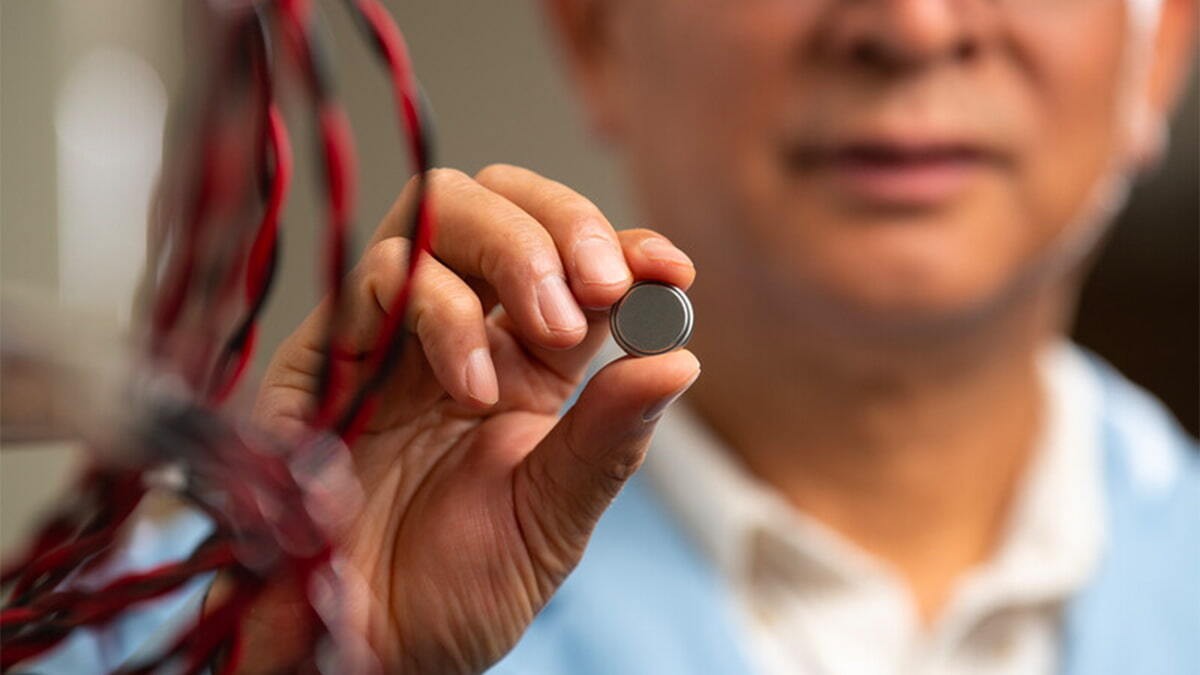
Sodium-ion batteries have great promise. They’re energy dense, nonflammable, and operate well in colder temperatures, and sodium is cheap and abundant. Plus, sodium-based batteries will be more environmentally friendly and even less expensive than lithium-ion batteries are becoming now. Sodium-ion battery performance has been limited because of poor durability, but this is about to change for the better.
Sodium-ion battery breakthrough
A research team from the US Department of Energy’s Pacific Northwest National Laboratory (PNNL) has developed a sodium-ion battery with greatly extended longevity. The findings, published in the journal Nature Energy, provide a promising recipe for a battery that may one day power electric vehicles and store solar energy.
The researchers shifted the ingredients that make up the battery’s liquid core. That shift prevents performance issues that have caused trouble for previous sodium-based batteries.
PNNL lead author Jiguang (Jason) Zhang, a battery technologies pioneer with more than 23 patented inventions in energy storage technology, said:
Here, we have shown in principle that sodium-ion batteries have the potential to be a long-lasting and environmentally friendly battery technology.
The right salt
As PNNL explains, in batteries, the electrolyte is the circulating “blood” that keeps the energy flowing. The electrolyte forms by dissolving salts in solvents, resulting in charged ions that flow between the positive and negative electrodes. Over time, the electrochemical reactions that keep the energy flowing get sluggish, and the battery can no longer recharge. In current sodium-ion battery technologies, this process happens much faster than in lithium-ion batteries.
The PNNL team attacked that problem by switching out the liquid solution and the type of salt flowing through it to create a new electrolyte recipe.
For the first time ever, scientists greatly extended the number of charging cycles (300 or more) with minimal loss of capacity (>90% retained) in a coin-sized battery in lab tests.
As PNNL explains, the current electrolyte recipe for sodium-ion batteries results in the protective film on the negative end (the anode) dissolving over time. This film is critical because it allows sodium ions to pass through while preserving battery life.
The PNNL-designed technology works by stabilizing this protective film. The new electrolyte also generates an ultrathin protective layer on the positive pole (the cathode) that contributes to additional stability of the entire unit.
Nonflammable technology
The PNNL researchers’ newly developed sodium-ion technology uses a naturally fire-extinguishing solution that is also impervious to temperature changes and can operate at high voltages. One key to this feature is the ultrathin protective layer that forms on the anode. This ultrathin layer remains stable once formed, providing the long cycle life reported in the research article.
Sodium-ion technology still currently lags behind lithium when it comes to energy density. But it still has its own unique advantages, such as temperature-change resistance, stability, and a long cycle life. Those advantages will prove to be valuable for applications of certain light-duty electric vehicles and even grid energy storage in the future.
Photo: PNNL
Read more: CATL introduces first-gen sodium-ion battery and AB lithium-sodium pack
UnderstandSolar is a free service that links you to top-rated solar installers in your region for personalized solar estimates. Tesla now offers price matching, so it’s important to shop for the best quotes. Click here to learn more and get your quotes. — *ad.
FTC: We use income earning auto affiliate links. More.






Comments